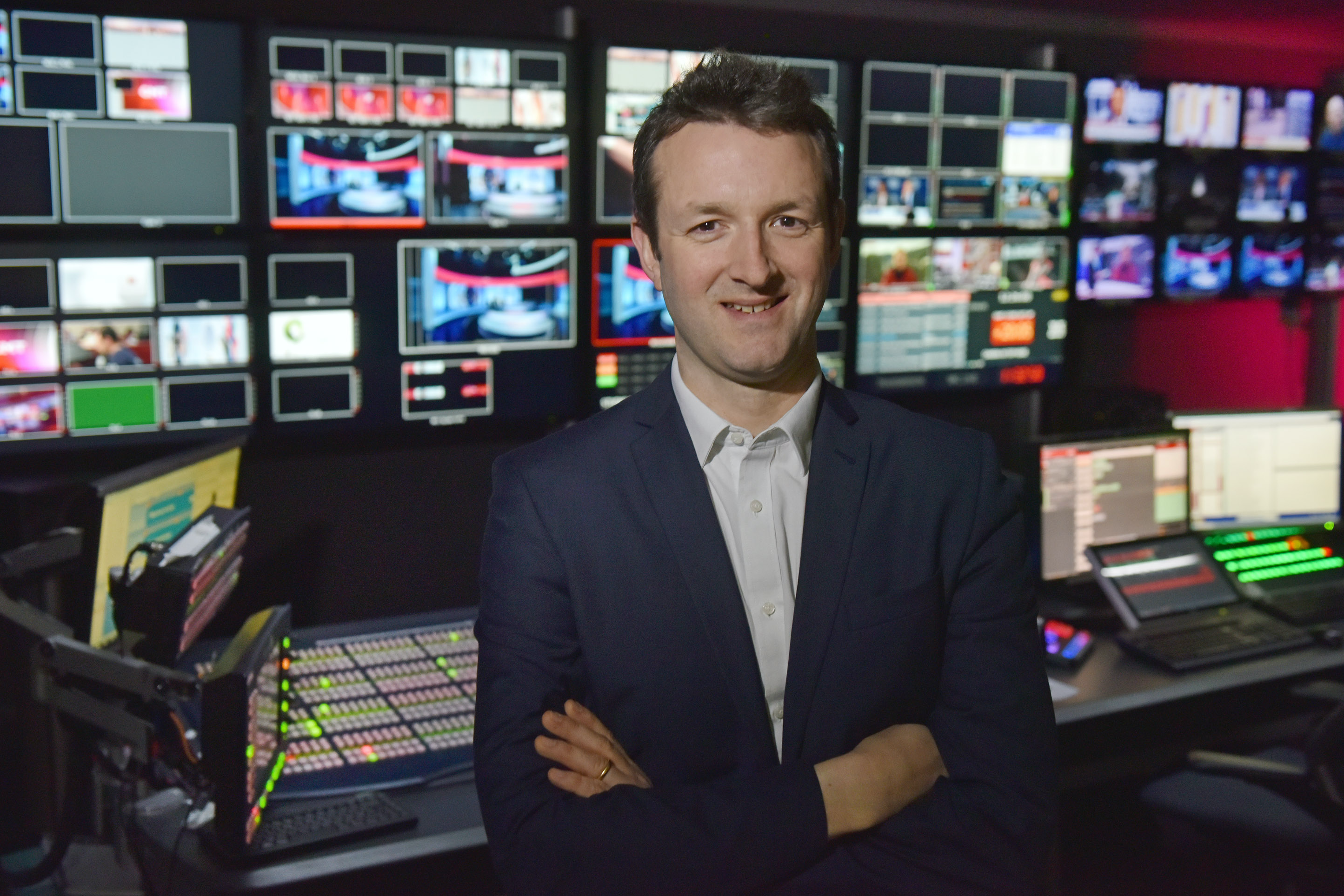In a dynamic and brutally competitive media landscape, it is time for public media to get serious about citizen participation says Marius Dragomir.
By Marius Dragomir, Director of the Center for Media, Data & Society at the Central European University
Three years ago, invited to speak at an international powwow that was to debate the role of public media in today’s society, I spent two hours or so travelling from the Bucharest airport to Sinaia, a resort in Romania’s Carpathian Mountains where the conference was held. During this time, the driver, a jocund employee of the public service broadcaster Radio Romania, which organised the event, asked me a barrage of questions about almost everything: life, work, people, politics, media, corruption, my birthplace, my music tastes and so on.
When the conversation turned to public media, glad that it was finally my turn to ask questions, I tried to find out whether Romania’s public media encouraged citizen participation. Discombobulated, the driver asked back: “What do you mean?” As I was clarifying my question, he chimed in: “Oh, yes, people call in all the time and fight for a spot in reality shows.”
Glimpsing my doubtful face in the rear-view mirror, while the car radio continued playing hits by a commercial radio station, my amiable driver asked me whether citizens should or could participate in public media in any other ways. I told him that, indeed, citizens should be involved in a more meaningful way in public media, in all aspects, programming, funding, management, and that they should be given that choice simply because they pay, directly or indirectly, for the service.
The idea that citizens can have a say in how public media are managed, or, even more, funded, baffled my road companion. How could an ordinary citizen tell the top brass at public media how they should spend their budget? “That is out of question,” he concluded.
Such ideas indeed would not have been welcomed a decade or so ago by those in charge of managing and governing public service media. But with technology fundamentally changing media consumption patterns and their relationship with citizens being transformed by these trends, media outlets should realise that they have to totally reframe their approach to the audience; public service media even more so due to their special remit and funding model.
"Citizens should be involved in a more meaningful way in public media"
Getting Serious About Citizen Participation
With new content platforms emerging at a rapid pace over the past decade, competition for eyeballs has intensified, further increasing the pressure on public service media to reform their operations and become more attractive to audiences.
As people, enjoying the benefits of such a growing competitive environment, increasingly question the model of financing public service media, “citizen participation” has become the new mantra for strategists and managers at public media. Scholarly literature about the topic has also grown substantially in recent years.
However, in reality, not much is being done when it comes to citizen participation. All one can think of are various forms, more or less successful, of interaction by citizens with the content produced by public service media.
In an article published last year, Spanish scholars Ana-María López-Cepeda, Mónica López-Golán and Marta Rodríguez-Castro analysed two categories of citizen participation in the media: discursive participation (consisting of comments to news articles, blog and forum posts, and feedback through other digital tools that allow users to express their opinion); and creative participation (channelled through activities requiring the audience’s active engagement with content and leading to user-generated content).
In recent years, public service media have done both. Forms of citizen participation include photo-sharing galleries hosted by public media where the audience is invited to send their own images (examples are seen in countries ranging from Spain, Finland and Denmark to Ireland to Estonia); blogs hosted by public media such as RTVE in Spain, RAI in Italy, YLE in Finland, BBC in Britain, and BNT in Bulgaria; and online forums like those initiated by ARD in Germany, Sweden’s SVT or Slovenia’s RTVSLO.
On top of all these types of citizen interaction, public service media have also boosted their presence on social networks. Today, most public service broadcasters have accounts on Facebook, Twitter and Google-owned YouTube.
But that is hardly sufficient.
A more articulate approach to citizen participation in public media is needed. To be really meaningful, citizens must have a say in three key areas: funding, governance and content production.
"A more articulate approach to citizen participation in public media is needed. To be really meaningful, citizens must have a say in three key areas: funding, governance and content production."
Who Pays the Bill
Public service media are financed through a mix of government, public and commercial revenue. Government funding usually comes in the form of state budget allocations. The license fee, the most common form of public funding accessed by public service media, is a fee that all households in a country are legally obliged to pay. Commercial funding consists of advertising, sponsorship or product placement.
On top of that, public service media generate additional revenues either through provision of services (transmitter maintenance, leasing facilities, studio rentals) and exploitation of content (programme royalties, merchandising & sale of goods, distribution of third-party content for commission).
Along the years, none of these funding models have been spared criticism. Government funding usually comes with strings attached, often having a chilling effect on the journalists working for the public media. In countries where public media fully draw on state funding, Hungary for example, they are gradually turning into a government branch, and treated as such by authorities. Public service media funded mostly through advertising risk becoming so commercial that they are hardly distinguishable from their commercial competitors.
Of all these types of funding, the license fee, common primarily in Europe, has been seen as the most appropriate form of financing public media for two reasons: it insulates to a certain extent the public media from political pressures and creates a certain bond with the audience, something that none of the other forms of funding do.
However, in recent years, even the license fee has come under critical scrutiny. In Germany, citizens increasingly refuse to pay the fee, arguing that in the internet era they see no reason why they have to fund a certain media outlet (or to fund a media outlet at all). In the U.K., following announcements last December about a planned restructuring of the BBC that included decriminalisation of the license fee non-payment, a total of 82,000 households stopped paying the fee in the five months to March 2020.
Although it secures the greatest financial stability for public media, the license fee is likely to be a less viable financial model in the digital economy where people have full control over what content they choose to pay for. The license fee, determined now based on ownership of a certain technical device or imposed as a blanket taxation, doesn’t give citizens any control over where their money goes.
Confronted with repeated attacks from commercial media and constantly losing the support of the audiences, public service media have to redesign their financial model in a way that would give citizens a much bigger say over how the financial resources are spent.
Various ideas have been floated. One of the most ingenious, proposed by Italian scholar Tiziano Bonini, is “civic crowdfunding”, a funding model that would allow citizens to decide the programmes in which to invest a quota (of 20%) of the license fee. Not only that such a financing model would still guarantee the financial stability of the broadcaster (as the revenue from the fee would still flow into the coffers of the media outlet) but it will also give citizens the choice to support the programmes they enjoy, or need, the most.
In conclusion, the key shift in the public media funding model has to be towards a more individualistic consumption pattern. Failing to achieve that, public media will further estrange their audiences and risk serious financial crises.
"Of all these types of funding, the license fee, common primarily in Europe, has been seen as the most appropriate form of financing public media"
Sharing Decision-Making
In addition to funding, citizens must also have a bigger role in how public media are organised. Back in 1996, the late Karol Jakubowicz, a scholar from Poland, argued that public service media governances needed a more participatory model based on principles similar to those of participatory democracy.
Although not every citizen can actually broadcast, he argued, the organisational structures of a public service broadcaster should be designed in a way to facilitate as much citizen participation in influencing policies and decisions as possible.
The idea was reinforced in 2011 by the Council of Europe, which recommended public service media to “ideally involve the public in its governance structures.” Nico Carpentier, a scholar who wrote extensively about citizen participation in the media, calls it “structural participation,” the form of participation in the organisational decision-making of a media outlet that will empower various groups in society to influence how they are represented in the media.
Attempts to involve civil society more into the governing of public media have been made during the past decade or so, mostly in western European countries.
For example, the boards of ARD and ZDF, Germany’s public service media, are created based on a proportional representation rule that gives berths on these governing structures to political parties, trade unions, business organisations, churches, universities, cultural institutions and NGOs. Another example is the Netherlands, probably the purest example of civic governance of public service media. The time and resources of the Dutch public service system are distributed among broadcasting associations made up of the country’s main religious and socio-political groups (locally known as “pillars”).
However, in spite of all these attempts to include civil society in the decision-making process, real citizen participation in the governing of public media is yet to be achieved as these bodies remain heavily politicised, which is by far the biggest obstacle to meaningful public participation in public media.
In Audience We Trust
Finally, citizen participation in content production will play an equally important role in the future of public service media. In an extremely dynamic, brutally competitive content production field, working closely with the audience to know their preferences and understand their perception of content quality is essential for any media outlet.
For the public service media, it’s even more imperative to do so, given the preferential treatment these media get in terms of access to public resources, both financial and technological.
In this new environment, chatting with people online and encouraging citizens to provide feedback on online forums is useful, but hardly enough. Instead, public media have to more vigorously and creatively respond to the rapid rise of the audience-led and audience-created flow of content that is often more visible, more powerful and more influential than the content created by professional journalists. An inspiring example of such interaction was “En la brecha,” an interactive documentary about the gender gap in the working environment, produced by Spain’s RTVE, that allowed women to join the platform and tell their stories.
In addition to such projects, fully opening up the newsrooms and integrating the audiences into the decision-making process related to content production is something that public media also have to embrace. That would help them move from a public service to a public-serviced media concept, which would be one way to ensure the relevance of public media in today’s digital economy.
In recent years, public service media have more and more engaged with their public, building a stronger presence on social networks and opening up their platforms to audience-generated content. As the Covid-19 pandemic has been unfolding, many public broadcasters saw audience numbers spike as people are looking for accurate information to help them ride the crisis.
This audience growth is a huge chance for public media to make the case for support of accurate news and quality, public interest content. But it should also be an incentive for them to finally inject some real meaning into citizen participation in public media.
"...public media have to more vigorously and creatively respond to the rapid rise of the audience-led and audience-created flow of content...”
The Author
Marius Dragomir is the Director of the Center for Media, Data and Society in Budapest, Hungary. He previously worked for the Open Society Foundations (OSF) for over a decade. Since 2007, he has managed the research and policy portfolio of the Program on Independent Journalism (PIJ), formerly the Network Media Program (NMP), in London. He has also been one of the main editors for PIJ’s flagship research and advocacy project, Mapping Digital Media, which covered 56 countries worldwide, and he was the main writer and editor of OSF’s Television Across Europe, a comparative study of broadcast policies in 20 European countries. He is now running the Media Influence Matrix, a global research project looking into power relations and undue influence in news media.
Marius has spent the past decade in the media research field, specializing in media and communication regulation, digital media, governing structures of public service media and broadcasting, spectrum management, and ownership regulation. He has authored expert studies and articles on journalism and media policies that have been published and translated in more than 60 countries.
He started his career as a journalist some 25 years ago in his native Romania where he worked for several local dailies, radio, and TV stations. Since 1999, he has been working for English-language media. Last year, with a group of journalists and researchers, he co-founded Mediapowermonitor.com, a community of experts in media policy covering trends in regulation, business, and politics that influence journalism.
Header Image: Social networking concept. Communication network. Credit: metamorworks/iStock

Related Posts
15th June 2020
Insight | Jamie Angus on why trusted news should have access to chat apps
BBC World Service Director, Jamie…
6th April 2020
Insight | An essential and important role in difficult times
The demand for the latest correct…
26th March 2020
Insight | An update on local services and all the ways to access COVID-19 information on CBC News
Everything from a new email destination…
16th December 2019
Insight | Facebook “state controlled” labels could ensnare public broadcasters
Facebook for more than a month now has…



